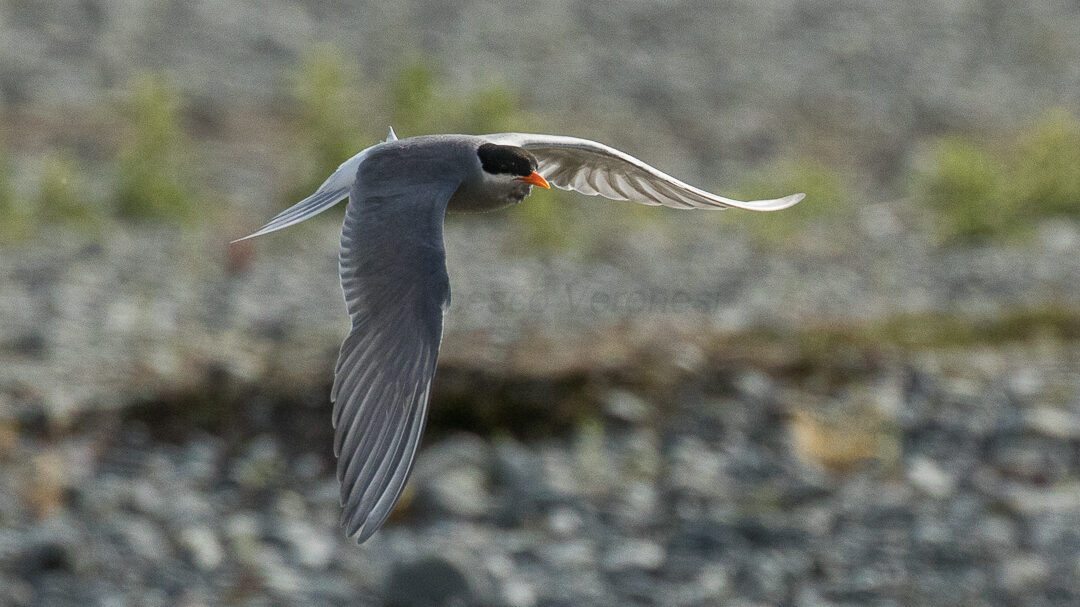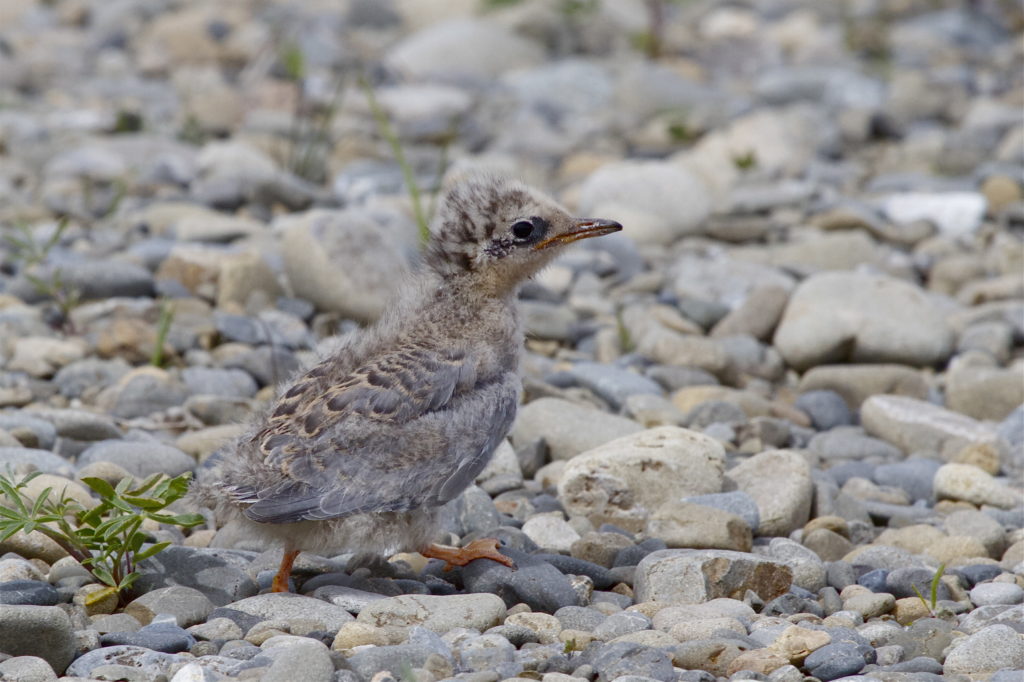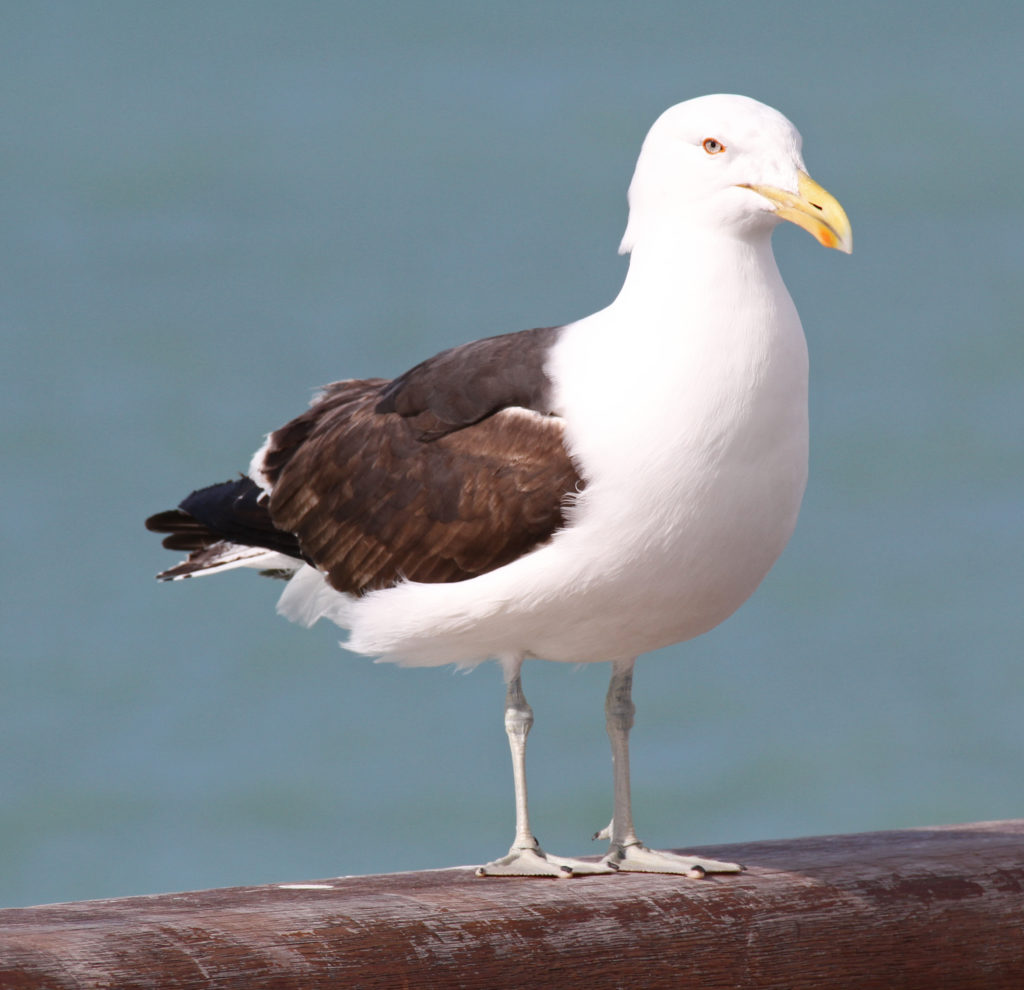Researchers from the University of Otago and Department of Conservation have been investigating how to improve the plight of our endangered black-fronted terns in research recently published in the New Zealand Journal of Ecology. Traps, bait stations and a Komatsu bulldozer can all help make riverbed nest-sites safer. But one key predator was still undeterred in this case study carried out on the lower Waitaki River.

“Black-fronted terns/tarapirohe (Chlidonias albostriatus) are highly adapted to nesting on clear shingle areas of the braided rivers in the South Island, New Zealand. They are nationally and internationally classified as ‘Endangered’. Ongoing threats, primarily an interaction of predation and habitat degradation or loss, have resulted in population decline.”
The habitat degradation that has occurred has been considerable.
“Invasive woody weed species, such as gorse, Scotch broom, blackberry, sweet briar and willow, as well as annuals such as lupins, sweet clover and Californian poppy dominate the vegetation on the riverbed. Herbicide spraying of approximately 300 ha sections of the river in the central braidplain is carried out annually by Environment Canterbury. The central braidplain of the Waitaki River has nevertheless reduced in width from approximately 2 km prior to the construction of dams in 1935 to approximately 0.5 km.”

Not only do the weeds invade the clear shingle areas where terns prefer to nest – they also provide great cover for stalking predators.
Control of introduced mammalian predators has only been partially successful in protecting the terns. This study investigated which predators were involved in tern predation on the lower Waitaki and whether habitat modification could swing the odds in favour of the nesting birds.
“Using the lower Waitaki River as a case study, we cleared vegetation from seven islands creating potential refugia from mammalian predators and providing high quality bare gravel breeding habitat. We: (1) determined the mammalian predators present on river banks, vegetated islands and cleared islands; (2) assessed the nesting success of black-fronted terns and primary causes of nest failure; (3) identified the predator species at nests using remote cameras; and (4) compared the nesting success on cleared and vegetated islands.”
Mammal predators can swim – even feral cats and hedgehogs if they have too. But it isn’t necessarily an activity they’re keen on. Stoats, however, are known to be strong swimmers.
“Initial trials showed that clearing vegetation on existing islands and covering it with gravel material from that island was faster and more cost-efficient than using riverbed gravel material to build up islands. Sites were therefore chosen based on the size of preexisting islands (0.3–0.5 ha), accessibility by the bulldozer, and their height above average flow (i.e. available gravel material). Between 0.4 to 2.0 ha (average 0.94 ha) was cleared from each site (approximately 1 km apart). The cleared islands were built up to a height of approximately 0.5 m above the mean watermark to protect islands from flooding. Channels (minimum width 14 m) separated each island from the adjacent riverbank or from other vegetated islands in the river.”
Fewer mammalian predators were detected on islands compared to adjacent riverbanks and only mice were detected once on one of the cleared islands.
“Cats, possums, hedgehogs, mustelids, and mice were detected on the banks of the lower Waitaki River in both breeding seasons, but no rats were ever detected. Possums, mustelids and mice were detected on vegetated islands, but no cats, hedgehogs or rats. In both years, we detected mustelids at some point during the breeding season on about half of the vegetated islands. On cleared islands, the only species detected were mice on one island.”
The bulldozer’s efforts appear to have been appreciated by the terns.
“Black-fronted terns established three colonies on islands immediately after the clearing of vegetation, but nesting success in the lower Waitaki River was low overall (50.5% to 56.4% of nests contained at least one egg that hatched) and the primary cause of nest failure was predation before and after clearing islands.”
The danger now, was found to come from the air.
“In 2015/16, we monitored 78 nests in four colonies on four vegetated islands. In 2016/17, we monitored 108 nests in three colonies on three vegetated islands, and 77 nests in three colonies on three cleared islands. Predation by southern black-backed gulls occurred throughout daylight hours and although black-fronted terns were often observed mobbing the intruder, they were unable to deter the much larger species. The ten nests for which the predator identity could not be confirmed at videoed nests were probably also preyed upon by southern black-backed gulls as all failures occurred in December in colonies where all other nests failed due to southern black-backed gull predation.”

One stoat did, however, turn up on camera ‘caught in the act’.
“Only one predation event by a stoat was observed in late December, where the stoat killed the incubating adult at night (1:45 a.m.) but did not prey upon the eggs. The nest was deserted by the partner the next morning. Again, of the camera-monitored nests on cleared islands (n = 24) and on vegetated islands (n = 32), most successes were observed early in the season and most failures, and particularly predation events, late in the season.”
While the efforts by bulldozer appeared to deter mammalian predators, ultimately there was no increase in nesting success.
“There was no overall difference in nesting successes of colonies between cleared and vegetated islands, presumably because gulls depredated tern eggs irrespective of vegetation cover around target nests. Nesting success depended on the timing and size of the colony, with earlier established nests and nests in larger colonies being more successful.”
The researchers do, however, believe that artificially created nesting habitat has potential conservation benefits.
“Consistent with other studies of mammalian predators in braided rivers, we detected fewer mammalian species and far fewer occurrences on islands compared to riverbanks, and even fewer mammalian predators on cleared islands compared to vegetated ones. This was despite cleared islands being closer on average to the riverbanks where more mammals occurred.”
On vegetated islands, mammalian predators can either be visitors or residents depending on the size of the island and availability of food sources year-round.
“In our study, mustelids were often detected only once on a vegetated island, potentially indicating visiting individuals, particularly given the very good swimming abilities of stoats. Although these results are limited to the lower Waitaki River, and to one breeding season after clearing islands, they indicate that clearing islands is potentially useful for indirectly managing mammals in larger, lowland river systems.”
The researchers also recommended that control of avian predators be considered.
The full research report is published in the New Zealand Journal of Ecology and is freely available online.

